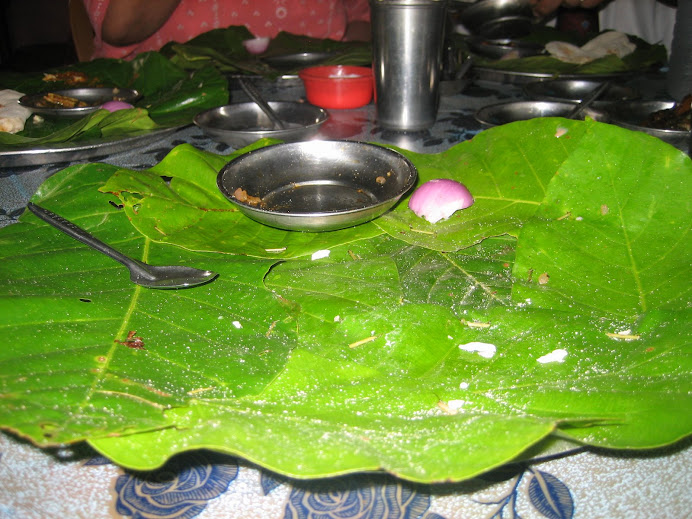


The brochure for the Sunderbans reads like an advertisement for a theme park, bone-chilling, do so at your own risk etc.
After reading The Hungry Tide, I knew if I traveled anywhere in India, it would be the Sunderbans, the most dangerous place in the world.
The Sunderbans is located just south of Calcutta and consists of the world’s largest mangrove forest. The many rivers and rivulets in this area come from the Hoogly better known as the Ganga River. Saltwater from the Bay of Bengal mixes with the fresh water of the rivers during the high tides providing habitats for many marine animals such as crocodiles, dolphins, otters, monitor lizards, and sharks. In the forest there are monkeys, many birds, spotted deer, wild boars, and of course, the Bengal tiger.
Had Elizabeth Tester from Western North Carolina not come to India prior to the NC delegation, I probably would not be writing this story. A simple conversation over lunch about why I hadn’t done any traveling in India raised the question “if you did want to go somewhere, where would it be?”
Without hesitation, I said, “The Sunderbans.”
Elizabeth made all the arrangements and the last week in January found us headed to the Sunderbans for three days and two nights.
We had a two hour bus ride from Calcutta and then another two hours by boat to The Tiger Camp. Our group seemed friendly enough and came from all over the place, Sweden, Italy, India, America, and Holland. Most of them however came for just a day and a night.
Our hut was pleasant enough and we shared it with a young woman from Holland and an American male from Colorado. That was a bit strange, sharing a room with a total male stranger. Needless to say, I left my jamies in my bag and slept in my clothes. Is that un-American or what?
We were back on the water right after lunch with our eyes peeled for The Tiger. Actually we saw very little except some spotted deer and birds. Our one day trippers were not too happy about that and seemed to think the tiger camp staff could conjure up tigers at will. I think they got a refund.
I loved the quiet of the river and the possibility of seeing something from the observation decks. We did see some monkeys and some cool birds.
In the evening, before supper, we were entertained by tribal dancers.
The Sunderbans also has the largest delta in the world. It is full of rivers, rivulets, and creeks. These are tidal rivers and all who live in the Sunderbans know exactly when the tides are. Animals take advantage of the low tide to swim across the river to different areas of the forest, and fishermen know not to get caught away from home at low tide.
It was at low tide that we saw tiger tracks entering the river from one side and emerging on the other.
At one point on the river, the captain pulled us very close to the bank, shut the engine off and let us just look. A whole boat full of people, and not one sound for some twenty minutes. It was wonderful! But there was no tiger, at least not yet.
Even though we had been instructed not to all run to one side of the boat or the other, when the captain whispered “TIGER”, we did exactly that. We did it quietly though, so I guess it was okay, and we didn’t capsize the boat.
Seeing a tiger in the wild was truly amazing. The importance of camouflage became clear. The tiger was lying in an opening with the sun shining down on him, but he was still hard to see with his stripes looking like shadows and his fur blending in with the foliage. Through binoculars, he was clearly visible and oh, so majestic looking. After a short time, he got up and ambled back into the forest. Several people in our group had zoom lenses on their digital cameras and all promised to share the photos, which they did.
This is a tiger preserve, but to actually see a tiger is quite an event, very rare.
Many people visit the Sunderbans but few ever get to see the tiger.
We kept being told, “You are very lucky!” Indeed, I felt lucky.
The next morning we were back on the river early and again enjoyed breakfast on the boat. I think that was my favorite part, eating breakfast at sunrise on the river.
Could we see another tiger? That would have been really rare, so we were happy with our one sighting. We did see lots of spotted deer and some more monkeys, and some kingfishers. And then it was time to head back.
One afternoon, we visited a neighboring village which was well maintained. The houses, mud and some brick with straw and tile roofs were larger than most village houses I had seen. Many folks kept gardens. All had to fetch their water from a community well, but what was striking was this village got its electricity from solar panels. How strange to see solar panels on a straw roof and a TV dish nearby. I found myself wondering a lot how things like affordable solar panels and probably homemade can be done in rural villages in India but not in the US where we like to boast about how clever we are. We have a lot to learn from our brothers and sisters here.
So, that’s the story of the Sunderbans. I’m glad to have gone there.

